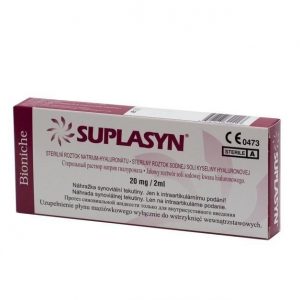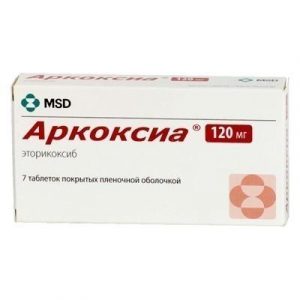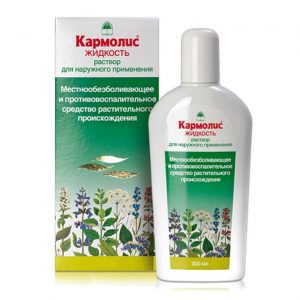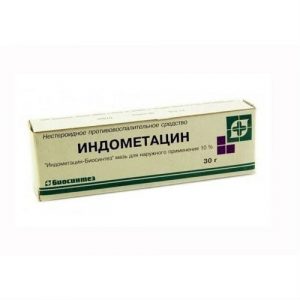Description
Release form
Film-coated tablets.
packaging 20 pcs
Indications
Rheumatoid arthritis, osteoarthritis, ankylosing spondylitis, articular syndrome with exacerbation of gout, bursitis, tendovaginitis.
Pain syndrome (mild to moderate intensity): arthralgia, myalgia, neuralgia, migraine, toothache and headache, algodismenorrhea pain from injuries, burns.
Designed for symptomatic therapy, reduce pain and inflammation at the time of use, does not affect the progression of the disease.
Use during pregnancy and lactation
The safety of the drug during pregnancy or during breastfeeding has not been established.
The drug is contraindicated in pregnancy and during breastfeeding.
Composition
Each film-coated tablet contains: Active ingredient: amtolmethine guacyl 600 mg
Excipients: lactose monohydrate 40.1 mg,
hypromellose (15 cps sidlp 6.0 mg, 6.0 mg Flowlac 100) 120.3 mg,
silicon dioxide colloidal 1.6 mg,
sodium carboxymethyl starch (type-A) 24.0 mg,
magnesium stearate 8.0 mg
Film coat: hypromellose (5 srs) 12.5 mg,
titanium dioxide 6.25 mg,
macrogol-400 1.25 mg .
Dosage and Administration
The recommended dose of amtolmethine guacyl is 600 mg twice daily. Depending on the degree of control of the symptoms of the disease, the maintenance dose can be reduced to 600 mg once a day.
The maximum daily dose is 1800 mg.
To maintain the gastroprotective effect of the drug Nizilat ® should be taken on an empty stomach.
Side effects
The frequency of side effects is classified according to the frequency of occurrence of the case: often (1-10%) infrequently (0.1-1%) rarely (0.01-0.1%) very rarely (less than 0.01 %), including individual messages and the frequency is unknown.
Disorders of the gastrointestinal tract: often – nausea infrequently – dyspepsia, discomfort in the stomach and intestines, bloating rarely – abdominal pain, diarrhea, vomiting, constipation, gastritis very rarely – peptic ulcer, impaired liver function.
Disorders of the kidneys and urinary tract: frequency unknown – increased blood urea nitrogen, urinary tract infections.
Disorders of the organ of vision: rarely – visual impairment.
Hearing disorders and labyrinth disorders: rarely – tinnitus.
Disorders of the respiratory system, chest and mediastinal organs: rarely – bronchospasm, shortness of breath, rhinitis, laryngeal edema.
Disorders of the nervous system: often – dizziness, headache, drowsiness, rarely – depression.
Vascular disorders: often – rise in blood pressure.
Disorders from the blood and lymphatic system: rarely – anemia, thrombocytopenia, agranulocytosis, leukopenia.
Disorders of the skin and subcutaneous tissue: infrequently – skin rash (including maculopapular rash), purpura, rarely – exfoliative dermatitis (fever with or without chills, redness, thickening or peeling of the skin, swelling and / or tenderness of the tonsils), urticaria, Stevens-Johnson syndrome, Lyell syndrome.
Immune system disorders: rarely – anaphylaxis or anaphylactoid reactions (discoloration of the face, skin rash, urticaria, itching of the skin, tachypnea or dyspnea, eyelid edema, periorbital edema, shortness of breath, shortness of breath, heaviness in the chest, wheezing) .
General disorders: often – weakness infrequently – swelling (face, legs, ankles, fingers, feet, weight gain) rarely – excessive sweating, fever, lymphadenopathy very rarely – swelling of the tongue.
Drug Interaction
Inducers of microsomal oxidation in the liver (phenytoin, ethanol, barbiturates, rifampicin, phenylbutazone, tricyclic antidepressants) increase the production of hydroxylated active metabolites.
Reduces the effectiveness of uricosuric, antihypertensive drugs and diuretics.
Increases the hypoglycemic effect of sulfonylurea derivatives, the action of anticoagulants, antiplatelet agents, fibrinolytics, the side effects of estrogens, glucocorticosteroids and mineralocorticoids.
Antacids and cholestyramine reduce absorption.
Increases blood concentration of lithium, methotrexate.
In some patients with impaired renal function, co-administration of NSAIDs and angiotensin-converting enzyme (ACE) inhibitors may further impair renal function.
Myelotoxic drugs increase the hematotoxicity of the drug.
Overdose
Symptoms:
abdominal pain, nausea, vomiting, erosive and ulcerative lesions of the gastrointestinal tract, impaired renal function, metabolic acidosis.
Treatment:
gastric lavage, introduction of adsorbents (activated charcoal) and symptomatic therapy (maintenance of vital body functions). There is no specific antidote.
Storage conditions
At a temperature not exceeding 25 ° C.
Keep out of the reach of children!
Expiration
2 years.
Deystvuyuschee substances
Amtolmetyn huatsyl
Pharmacy terms of sale
Prescription
tablet dosage form
dosage form
tablets




